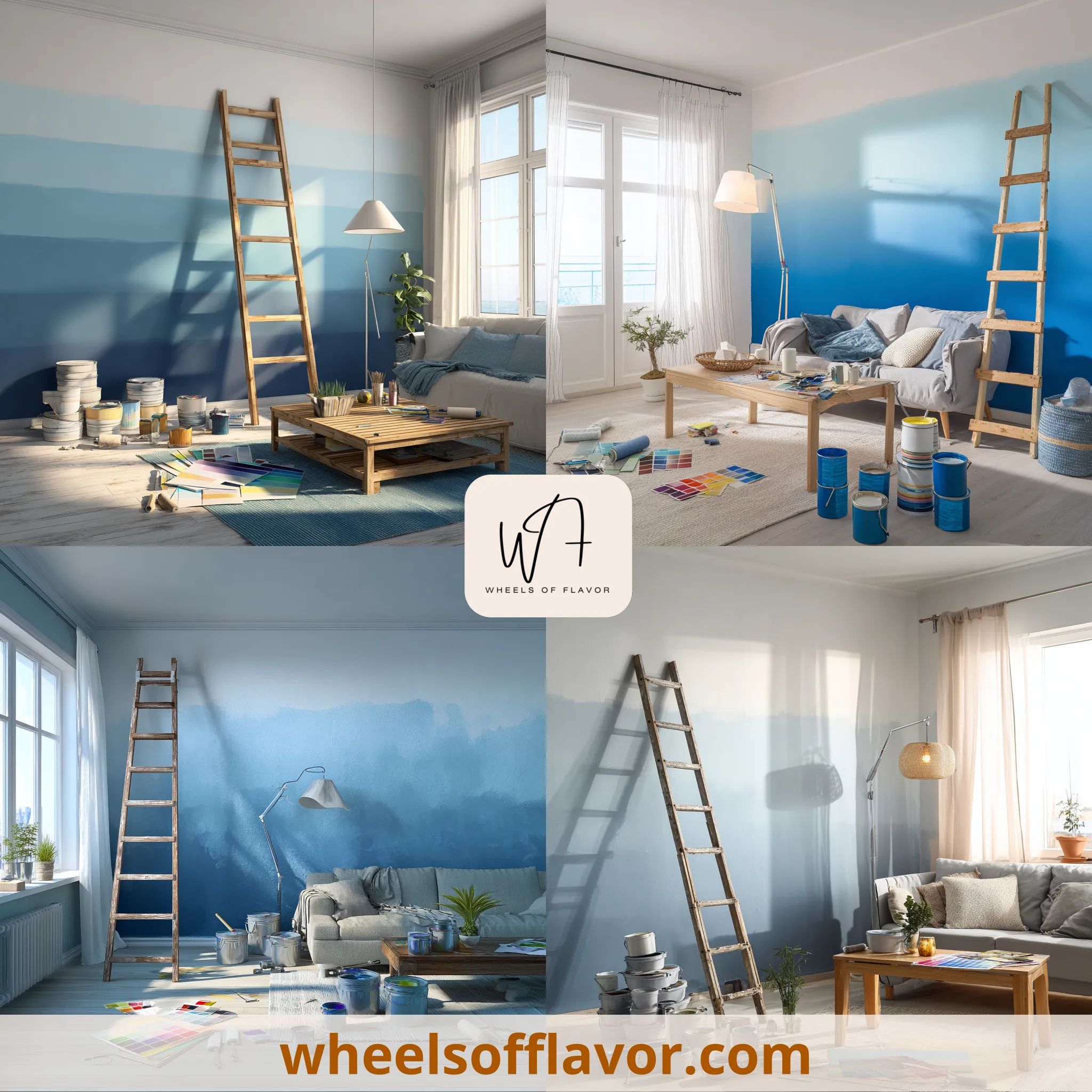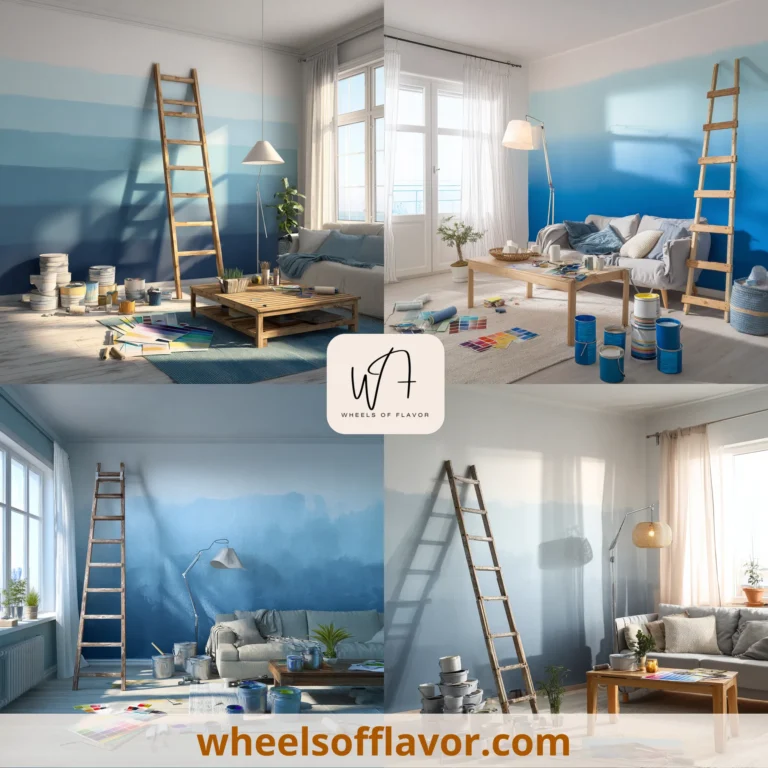
Shadow painting is more than just an artistic technique—it’s a powerful way to add depth, drama, and personality to any room. By skillfully using light and dark contrasts, you can create illusions of space, highlight architectural features, and evoke specific moods. Whether you’re aiming for a cozy, intimate atmosphere or a bold, modern statement, shadow painting ideas offer endless possibilities. This method has been used for centuries in fine art and is now gaining popularity in home decor for its ability to make walls come alive. In today’s fast-paced world, where homes serve as sanctuaries, mastering shadow painting can help you craft a unique environment that reflects your style. It’s an affordable alternative to major renovations, allowing you to experiment with colors and effects without breaking the bank. Plus, with the rise of DIY culture, more people are discovering how accessible and rewarding this approach can be. In this article, we’ll explore various shadow painting ideas that cater to different skill levels and design preferences. From subtle gradients to dramatic geometric patterns, you’ll learn how to use shadows to enhance your living spaces. Get ready to unlock the potential of your walls and turn ordinary rooms into extraordinary showcases of light and shadow.
Shadow Painting Ideas for Beginners: Easy Steps to Get Started
If you’re new to shadow painting, start with simple techniques that require minimal tools and expertise. One of the easiest shadow painting ideas is using a two-tone color wash. Choose two shades of the same color—like light and dark blue—and apply the lighter shade as a base. Then, with a damp sponge or cloth, gently dab the darker shade along the edges or in corners to create soft shadows. This method adds depth without overwhelming the space. Another beginner-friendly approach is stencil shadowing. Purchase or create a stencil with a pattern, such as leaves or geometric shapes. Paint the wall in a neutral color, then use the stencil with a slightly darker hue to imprint shadows around the design. This creates a subtle, textured effect that’s forgiving for mistakes. Tools you’ll need include basic paintbrushes, rollers, painter’s tape, and a palette for mixing colors. Always prep your walls by cleaning and priming them to ensure smooth application. Practice on a small section or sample board first to build confidence. For inspiration, check out tutorials on DIY network blogs, which offer step-by-step guides. Remember, shadow painting is about layering; don’t rush the process. Allow each coat to dry completely to avoid smudging. With these shadow painting ideas, even novices can achieve professional-looking results that make rooms feel larger and more dynamic.
Advanced Shadow Painting Ideas: Mastering Depth and Dimension
For those with some painting experience, advanced shadow painting ideas can elevate your decor to an artistic level. Trompe l’oeil, a technique that creates optical illusions, is perfect for adding realistic shadows. For instance, paint a faux windowsill with shadows cast by imaginary curtains or plants. Use a combination of acrylics and glazes to blend colors seamlessly, focusing on how light would naturally fall. Another advanced method is ombre shadow painting, where colors gradient from dark to light vertically or horizontally. This requires careful blending with a dry brush or airbrush tool to avoid harsh lines. Start with the darkest color at the bottom of the wall and gradually lighten it upward, mimicking a sunset or dawn effect. This not only adds depth but can also make ceilings appear higher. Incorporate texture by using techniques like rag rolling or sponging with contrasting shades to simulate shadow variations on textured surfaces. Tools for advanced projects might include airbrushes, fine-tip brushes, and color-mixing guides. Always sketch your design lightly with pencil first and use reference images for accuracy. These shadow painting ideas demand patience but result in stunning, custom features that become conversation starters. For more complex projects, consider consulting resources like Sherwin-Williams’ color experts for professional tips. With practice, you can create immersive environments that play with perception and light.
Shadow Painting Ideas for Different Rooms: Tailoring Techniques to Spaces
Shadow painting ideas can be customized for specific rooms to enhance their function and ambiance. In living rooms, use shadow painting to create a focal point, such as a dark accent wall with light shadows around a fireplace or shelving. This draws the eye and makes the space feel cozier. For bedrooms, opt for softer shadow painting ideas like gradient walls in calming colors like lavender or gray, which promote relaxation by simulating natural light shifts. In kitchens, shadows can add warmth; try painting shadows beneath cabinets or along backsplashes to give a sense of depth and hide imperfections. Bathrooms benefit from water-resistant paints with shadow effects around mirrors to mimic spa-like serenity. When planning, consider the room’s lighting—natural light enhances shadows, while artificial light may require adjustments. For example, in a dim hallway, use lighter shadows to brighten the area. Always test colors in the actual room at different times of day to see how shadows interact. Practical tips include using matte finishes to reduce glare and emphasize shadows, and incorporating elements from https://wheelsofflavor.com/diy-projects for cohesive decor. By tailoring shadow painting ideas to each room, you ensure that the technique not only looks beautiful but also supports the room’s purpose, making your home more harmonious and inviting.
Conclusion
Shadow painting ideas offer a versatile and affordable way to transform your home, adding depth, emotion, and style to any space. From beginner-friendly techniques like color washing to advanced methods like trompe l’oeil, these approaches allow you to play with light and dark to create unique effects. By customizing shadows for different rooms, you can enhance functionality and ambiance, turning ordinary walls into dynamic features. As home decor continues to evolve, shadow painting stands out for its ability to merge art with practicality, encouraging creativity without requiring extensive resources. Looking ahead, trends may incorporate smart lighting with painted shadows for interactive environments. To get started, experiment on small areas and build your skills gradually. Remember, the key is patience and practice—don’t be afraid to make mistakes, as they often lead to innovative ideas. For more inspiration, explore related topics on color theory and DIY projects. Embrace shadow painting as a tool to express your personality and make your home a true reflection of you. Start today, and watch as shadows bring new life to your walls.
Frequently Asked Questions
Q: What are the best colors for shadow painting?
Neutral shades like grays, beiges, and soft blues work well for shadow painting because they blend easily and create subtle contrasts. For dramatic effects, use complementary colors like dark navy with light cream. Always consider the room’s existing decor and lighting when choosing colors.
Q: Can I use shadow painting in small rooms without making them feel smaller?
Yes, shadow painting can actually make small rooms feel larger if done correctly. Use light colors as a base with shadows placed strategically to draw the eye upward or toward focal points, creating an illusion of space. Avoid dark shadows in cramped areas; opt for soft gradients instead.
Q: How do I maintain shadow-painted walls over time?
To maintain shadow-painted walls, clean them gently with a soft cloth and mild detergent, avoiding abrasive cleaners that could fade the shadows. Touch up any chips with the original paint colors, and consider using a clear sealant for high-traffic areas to protect the finish.

